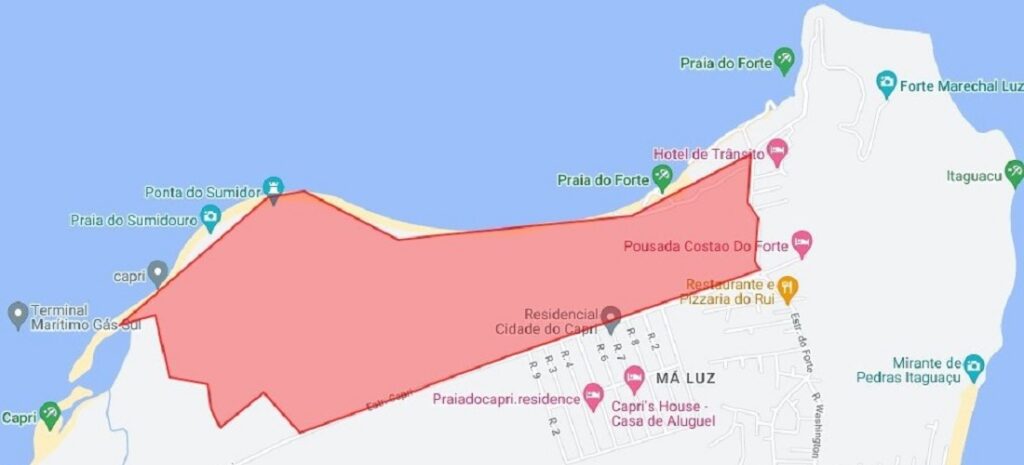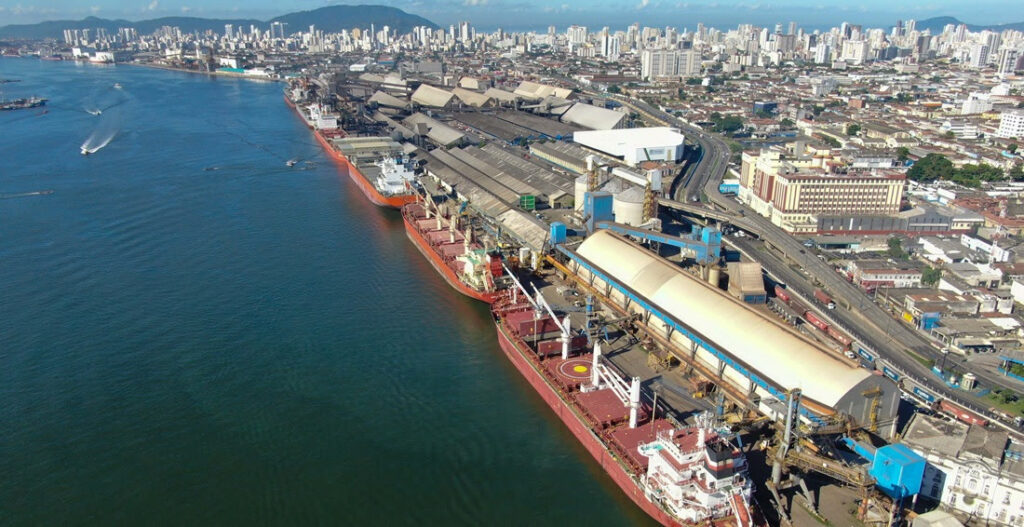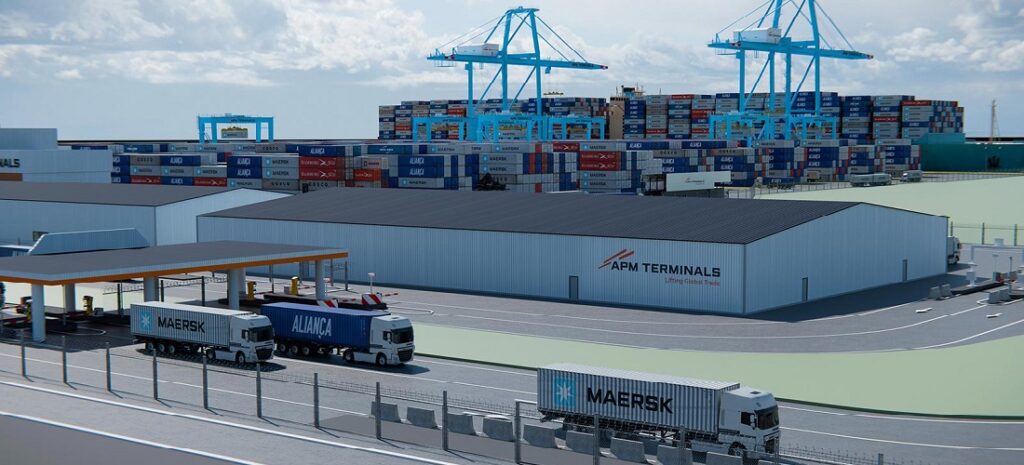COURT ORDERS SÃO FRANCISCO DO SUL TO ISSUE FEASIBILITY CERTIFICATE FOR NEW PORT

Jan, 22, 2024 Posted by Gabriel Malheiros Week 202404 The city government of São Francisco do Sul will have to to comply with the ruling of Justice Luiz Fernando Boller, which demanded the emission of a Viability Certificate for the maritime port project Porto Brasil Sul. The company “Worldport Desenvolvimento Portuário S/A” plans to establish the port at the mouth of Babitonga Bay, specifically in the Praia do Forte region. The certificate must be issued by the Secretariat of Infrastructure and Urbanism (Seinfra) and petitioned by the Municipal Attorney General’s Office by February 14. Otherwise, the city will be subject to a daily fine of R$500. The legal process around the port has been ongoing since 2018. In 2016, São Francisco do Sul issued the certificate, which has a one-year term. After its expiration, Worldport requested a renewal, which was denied by the public entity. Following that, Worldport filed a lawsuit, asking the court to enforce the issuance of the license. Initially, the court ruled that the city had the right to deny the certificate. However, Worldport appealed, and the request received a favorable opinion from the Justice, shifting the course of the process. The recent determination was based on a prosecutor’s argument, leading the judge to order São Francisco do Sul to issue the certificate. According to the city’s administration, a request was filed with the Secretariat of Union Heritage (SPU) on November 8, 2022, to establish a conservation unit in the area. As per the municipality, a new request was made on December 19, 2023, to safeguard the preservation area. Additionally, local legislators are deliberating the revision of the municipal master plan, which, among other issues, addresses the possibility of new port facilities in the city. São Francisco do Sul also cited that establishing ports anywhere in Brazil undergoes final scrutiny by the National Waterway Transportation Agency (Antaq). Environmental licensing is conducted by the Brazilian Institute of the Environment and Renewable Natural Resources (Ibama). The Terminal Gás Sul (TGS) is located in Ponta do Sumidouro and has the potential to engage in gas commercialization. Source: São Francisco do Sul City Hall
PORT OF SANTOS PLANS PRIVATE PARTNERSHIPS, TERMINAL EXPANSION

Jan, 24, 2024 Posted by Gabriel Malheiros Week 202404 After a year of slow motion, the Port of Santos is drawing up new expansion plans and intends to accelerate its growth projects, said Anderson Pomini, the president of the Santos Port Authority (APS). The state-owned company intends to launch two public-private partnerships (PPPs) by the end of 2024: one for the deepening of the access channel and the other for a tunnel connecting the cities of Santos and Guarujá. The company has also officially ruled out the idea of a new container megaterminal, which had been dubbed STS 10. On the other hand, it is studying the expansion of the terminals of Brasil Terminal Portuário (BTP) and Santos Brasil by about 1.5 million TEUs (20-foot equivalent units of containers) through contract addendum, without the need for a tender, he said. In office since April 2023, Mr. Pomini said he agrees with the port market’s criticism that the past year has been practically a waste of time in terms of progress for Santos. But he said the scenario is different in 2024. “This year, I have an obligation to enforce speed. To do that, I needed three things: the removal of the port from the privatization program, which slowed down the contracting; more funds; and the delegation of competencies [a measure that decentralized decisions on auctions and planning to the APS]. All three have been resolved.” One of the main demands of the port operators is the deepening of the port’s access channel to 17 meters from 14.5 meters, which would allow larger ships to pass through. According to Mr. Pomini, the tender for the works to deepen the channel to 16 meters is expected to be published in the first half of the year. The deepening to 17 meters would be done through a PPP. “We are studying with the BNDES [Brazilian Development Bank] a concession for dredging and other related services, for 25 or 30 years.” The funds for the project would be the same as what APS already spends on dredging today. “The annual maintenance budget is R$300 million.” Another PPP that the port authority plans to launch this year is the Santos-Guarujá tunnel, a project included by the federal government in the Lula administration’s New Growth Acceleration Program (PAC) and whose leadership has been disputed with the São Paulo government. According to Mr. Pomini, the idea is to use APS’s cash, which currently stands at around R$2.9 billion, to pay for up to 50% of the tunnel’s construction—as of the third quarter, cash reserves totaled R$2.3 billion. There would be no consideration over the course of the contract, he said. “The 50% could go down, depending on the modeling that is done and the competition.” The federal government could split the contribution to the construction of the tunnel with the state, but Mr. Pomini said the federal government has taken on the entire amount because the state’s contribution would be financed by BNDES. “If it’s going to be 100% federal funds, we’ll do it through the federal government.” When contacted, the state government said it has “financial and fundraising availability” for the project and that the amount was not included in this year’s annual budget law because the work would not begin until 2024. The government also said that “the only existing executive project for the tunnel” was carried out by the state and is being updated. In addition to the PPPs, the port authority is planning a new route to expand the port’s container terminals. Mr. Pomini has decided to put an end to the STS 10 project, which would be a megaterminal in the city of Santos, which would have had an annual capacity of 2.3 million TEUs. Instead, APS is proposing to expand the terminals of BTP (controlled by Maersk and MSC) and Santos Brasil, annexing adjacent areas, which would be done by means of a contract addendum, without the need for a tender, he said. Together, the two expansions would add 1.5 million TEU of capacity per year. In the case of BTP, the idea is to incorporate part of the area that would be included in the STS 10. “We can classify it as a non-tenderable area. For example, if there’s a public pier and a port back-up area used by BTP, I can avoid a bidding process because it’s in the public interest for BTP to increase its capacity and for a public pier to be implemented. There are legal instruments that allow merger without a bidding process.” In the case of Santos Brasil, the annexed area must be cleared because it is currently occupied by precarious housing. “It’s an easier case because it’s a non-bidding area. We’ll remove the houses on stilts, and in return the company will invest in the construction of these houses.” The chart below provides a comparison between container exports and imports through the Port of Santos between January 2019 and November 2023. The data provided below is from the DataLiner data service. Despite Mr. Pomini’s plans, sources in the sector say that neither group has been formally approached and that there has been no concrete proposal. They also say that there is interest in expanding capacity, but everything depends on the terms of the counterparts. One source also points out that the companies already have investments underway as a result of early contract renewals—Santos Brasil’s was signed in 2015 and BTP’s in 2023. When contacted, BTP said that it “believes it is essential to increase the capacity of the Port of Santos” and that it is “closely following all the projects and ideas that are being developed.” Santos Brasil said it is “available to collaborate in projects to develop the container sector in the port.” Another APS plan to expand capacity would be to build a new container terminal on the island of Bagres. However, Mr. Pomini said this is not a short-term project. It would still be necessary to make changes in the public area of
APM TERMINALS COMPLETES LAND PURCHASE FOR SUAPE TERMINAL

Jan, 26, 2024 Posted by Gabriel Malheiros Week 202402 APM Terminals Suape has completed the purchase of approximately 500,000m², the latest stage in the development of a fully electrified terminal which is expected to boost trade, employment and development in Brazil’s northeast. With the finalisation of the purchase of land at the Governador Eraldo Gueiros Port Industrial Complex (Suape), Pernambuco, plans to commence operations in the second quarter of 2026 are on track, with work due to commence this month and next, said APM Terminals in a statement. In 2022, the Maersk-owned port operator won the judicial auction for the acquisition of the Isolated Production Unit of Estaleiro Atlântico Sul (EAS) land. Since then, APM Terminals has taken several legal steps to complete the deal, made official with the signing of the land purchase. During this period, the company has also worked on developing the project’s construction project. APM Terminals Suape will be the first 100% electrified terminal in Latin America and will have modern infrastructure, fully planned to meet customer needs, with pioneering initiatives in port sustainability, according to APM Terminals, which said it will also be able to handle up to 400,000 TEUs per year and will increase the capacity of the port complex by 55%. The chart below provides a comparison between container exports and imports at the Port of Suape from Jan 2019 to Nov 2023. The data is a courtesy of DataLiner, a Datamar product. Suape Port Exports & Imports | Jan 2019 – Nov 2023 | TEU Chart Line chart with 2 lines. The chart has 1 X axis displaying categories. The chart has 1 Y axis displaying TEU. Data ranges from 322 to 9711. TEUExpImp20190120190320190520190720190920191120200120200320200520200720200920201120210120210320210520210720210920211120220120220320220520220720220920221120230120230320230520230720230920231102,5k5k7,5k10k12,5k End of interactive chart. Source: DataLiner (click here to request a demo) The new terminal will feature a complete environmental management system, waste management, wastewater treatment and groundwater flow modeling for pollution control, while it will also have its own 5G network, which will make it possible to transmit information in real time to customers, 24/7. In addition, remote-controlled RTGs (Rubber Tyred Gantry Cranes), will increase remote operational agility, positively impacting productivity and ensuring greater safety. Source: APM Terminals and Container-News
